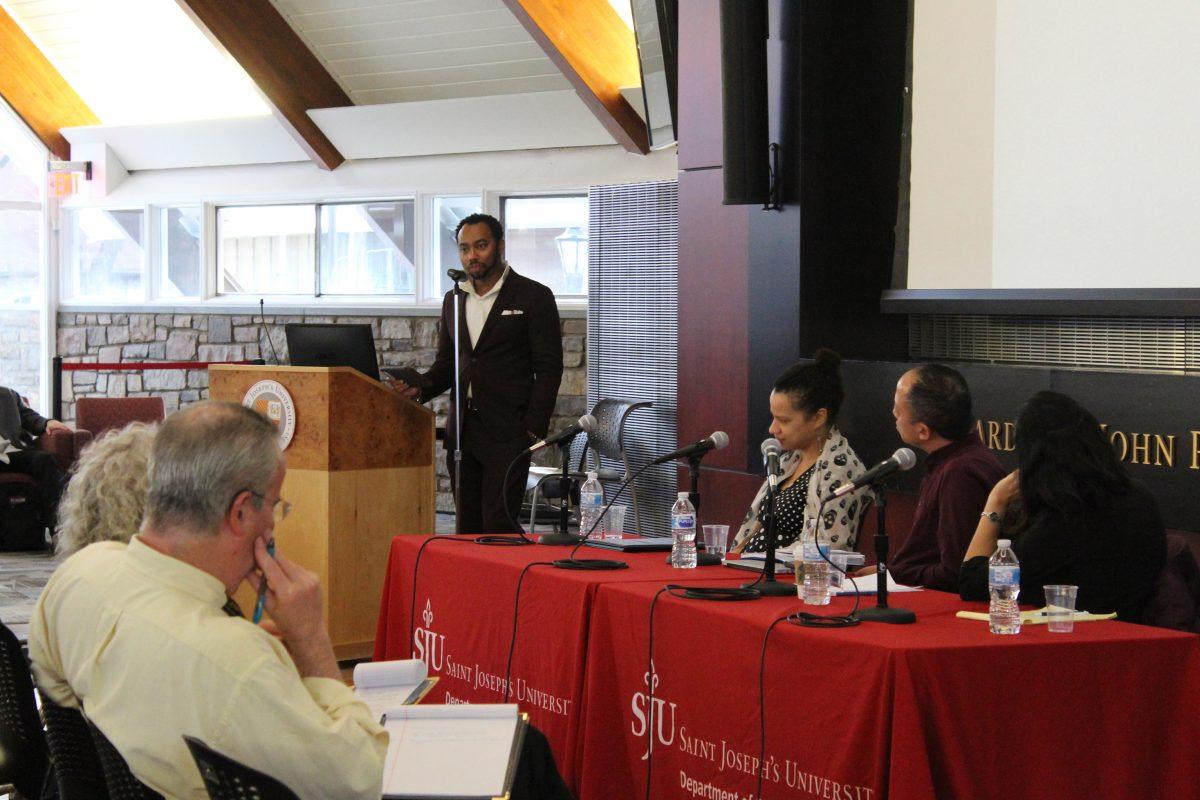Panel challenges racial misconceptions
The Middle Ages, a period roughly from 500 to 1500 C.E., was a racially and culturally diverse time, according to several scholars and experts who spoke at the event “Race In the Middle Ages” held on March 20 in the Cardinal Foley Campus Center.
Featured speakers focused their discussions mainly on dispelling the many misconceptions and error-filled accounts of the Middle Ages, especially those that have been used by white supremacist groups to justify their views on racial “purity” and cleansing.
“There are certain groups of people, primarily white supremacists in the United States today, who are trying to use the Middle Ages as an example of a pure-white time in the West, which it was absolutely not,” said Paul Patterson, Ph.D., associate professor of English. “We know that there was much more diversity than I think we often imagine.”
Patterson said there is a change currently happening in the field of medieval studies, and it is partly a response to the resurgent ideologies of white supremacy.
“Medieval studies as a field is at an interesting moment because white supremacy is trying to co-opt our time period to use it for really terrible purposes, and so medievals have been really active in pushing back against that,” Patterson said.
Panelists featured at the event came from diverse fields of expertise in medieval history. They included Carissa Harris, Ph.D., assistant professor of English at Temple University, Jonathan Hsy, Ph.D,, associate professor of English at George Washington University, Sierra Lomuto Ph.D., post-doctoral fellow at Macalester College, and Cord Whitaker M.A. Ph.D., assistant professor of English at Wellesley College.
Harris, whose main research focuses on gender and sexuality in medieval literature, said the medieval period is often used as a point of contrast for our current time.
“We use it to talk about war, terrible violence, or torture, or terrible treatment of women, and we use it as a distancing mechanism,” Harris said. “I’m really interested in thinking about how the medieval paved the way for violence and prejudice against black women.”
Another focus in the discussion was how certain prejudices from the medieval period, such as anti-Semitism, are linked to contemporary racist ideologies.
Hsy said anti-Semitism is evident in Geoffrey Chaucer’s “The Canterbury Tales,” where a character called the Prioress tells a story about the Virgin Mary.“The story itself, unfortunately, is anti-semitic, so the bad guys in the story are Jews who allegedly—in the story—kill an innocent Christian child,” Hsy said. “These sorts of stories caused violence against Jews in real life throughout Europe.”
Hsy said these stories are called blood libel stories and circulated in the Middle Ages, and they featured false accusations that Jews had somehow tortured innocent children.
“When we’re thinking about today, when we have mass shootings in synagogues and mosques on the basis of people who have been taught that non-Christians are bad,” Hsy said. “These sorts of stories have a long legacy going back to the Middle Ages. That’s one negative example of how certain stories in Chaucer’s time can have a real life analog today that really showcased the long histories of bigotry and racism even if these stories might not have intended to have those effects.”
Lomuto said Hsy’s example shows how religion was racialized.
“A lot of times in modern literature we can get inundated with more post-Enlightenment constructions or understandings of race as being wholly tied to biology and physiognomy—skin color, physical features, and things like that,” Lomuto said. “And because of that, we don’t always see how racial formations can operate in a more invisible level as a way of organizing our world and organizing our world views.”
Whitaker said the 74-page manifesto posted by the white male shooter who killed 50 Muslim worshippers in a mosque in Christchurch, New Zealand repeatedly refers to Muslims living in the West as “invaders.”
“I had to read it [the manifesto] because I had to know—would it be medievalist?” Whitaker said. “And sadly of course the answer was what I expected. The title page features the black sun that Nazi Heinrich Himmler had made into the symbol for Nazi Germany’s SS in the 1930s and that may have been inspired by early medieval Merovingian discs.”
Jews, Muslims and Christians lived fairly peacefully together for decades during the Middle Ages, according to Patterson. That’s something Patterson hopes to emphasize with this panel.
“There is something of a moment in the field of thinking more broadly about race and how it fits into our discussion,” Patterson said. “It’s something that wasn’t always the case. Hopefully this symposium will help continue that conversation.”















































